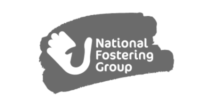Delivering a full website migration without risking rankings, traffic, or conversions.
Forbes Solicitors, a nationally recognised UK law firm, faced the critical task of migrating their website without jeopardising search engine performance. With organic visibility playing a key role in driving enquiries and conversions, even a temporary dip in rankings or traffic could have real commercial consequences.
The challenge was multi-layered. The existing site was weighed down by legacy SEO issues, including fragmented content, inconsistent metadata, and keyword cannibalisation. The structure made it difficult for users to navigate and for search engines to crawl efficiently. Alongside these technical demands, the project required collaboration with multiple stakeholders across different teams, each with their own priorities, sign-off processes, and timelines. Delays were a risk, and so was misalignment.
At its core, the project demanded a seamless transition that preserved business-critical metrics, resolved long-standing SEO inefficiencies, and laid a future-ready foundation – all without disrupting day-to-day operations or digital performance.








